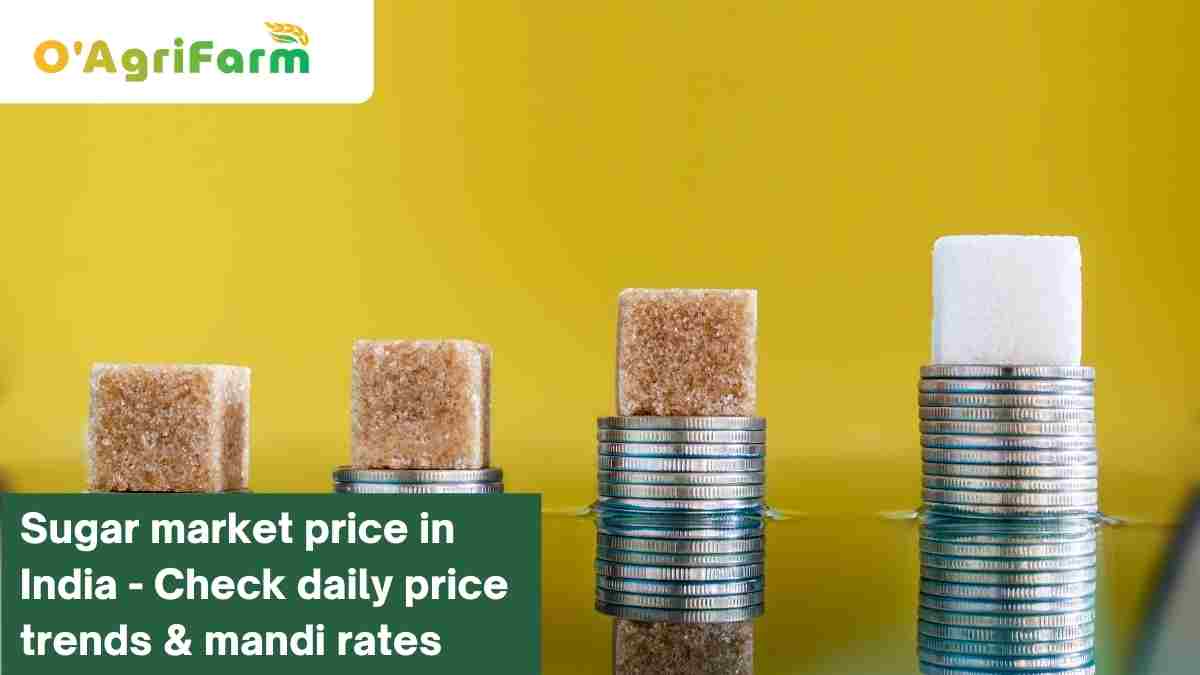Sugar market price in India – Check daily price trends and mandi rates
If you are in the commodities business, then you would know how important it is to keep an eye on the fluctuating market prices of that certain commodity.
The Indian sugarcane industry is a booming business. This rapid-growing and versatile cash crop brings livelihood to almost 50 million sugarcane farmers and mill workers across India. What’s more, India is the world’s second-largest sugarcane producer in the world.
Which factors determine the commodity pricing of sugarcane?
As we mentioned before, sugarcane is a versatile cash crop. Therefore, it is important that the farmers and wholesale buyers/sellers of sugarcane are well versed with the market pricing of this crop.
The fluctuations in sugarcane pricing is dependant on several factors, they are:-
- Cost of production of sugarcane during that particular harvest season.
- The general price evaluation of other crops in the market.
- The price at which secondary goods can be produced from sugarcane like sugar, ethanol, and molasses.
- The market price of the above-mentioned secondary products in the existing market.
A lot of sugarcane produced in India is also exported to foreign countries. Industries all around India are allowed to export their goods to foreign countries to help regulate the sugarcane pricing within Indian markets. The export of sugarcane also helps with bringing in foreign revenues into the country.
What has ethanol got to do with the sugarcane industry?
The Indian government highly encourages sugarcane producers to export their secondary products to outside countries. Sugar, molasses, and more increasingly- ethanol has been gaining popularity in foreign countries.
Quite recently in an address to the nation, Prime Minister Narendra Modi stressed the need for India to shift towards becoming an energy-independent nation. What made this speech unique was his insistence on giving biofuels importance in the country’s journey towards energy independence.
Let us look at a few key points that might have impacted sugarcane pricing in the past few years:-
- In January of 2003, the government of India had launched Ethanol Blended Petrol (EBP) program to help slowly phase out the country’s dependence on importing fuel.
- The program only gained real traction in 2014 when tax reductions and more funding for Ethanol Blended Petrol based research was given.
- In 2018, the government of India laid down targets to be met by 2030 in the National Policy on Biofuels. (NPB)
- In 2019-20, more than 170 crore liters of ethanol were produced in India. 62 percent of India’s ethanol production is either sugarcane or molasses-based.
These are a few reasons why the domestic markets saw a jump in sugarcane pricing from the early 2019s to the late 2021s.
Sugarcane and the importance of mandi pricing and market trends
We have come a long way from checking sugar market price in the newspaper to having dynamically updating charts of sugar prices.
And with the ever-growing importance being placed on sugarcane and its secondary products, it is important to be kept updated with the price and trends of sugar and sugarcane products.
O’Agrifarm’s website is an easy-to-use interface that lets you check the sugar market price and trends of sugarcane and sugar. O’Agrifarm also lets you check the trends and prices for other cash crops and agricultural produces.




